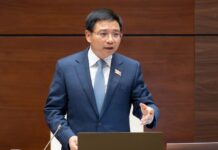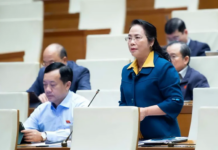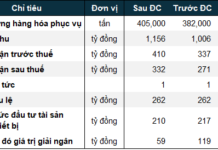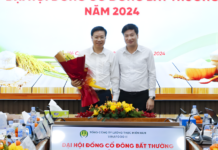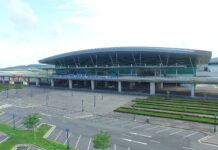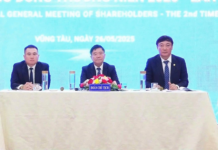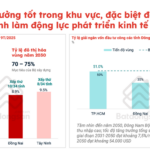
Mr. Pham Minh Chinh, Prime Minister of Vietnam, is checking the progress of the construction of Highway Beltway No. 3 in Ho Chi Minh City. Photo: VGP/Nhat Bac
|
At the third meeting of the Coordinating Council for the Southeastern region (on the morning of May 4 in Tay Ninh), the Ministry of Planning and Investment and related agencies summarized the Council’s operations, the achievements gained, the implementation of the recently approved regional plan, reviewed specific mechanisms and policies for the Southeastern region, and updated the implementation status of a number of important projects connecting the region.
The Politburo also issued the Resolution No. 24-NQ/TW on October 7, 2022, on socio-economic development, and national defense and security for the region until 2030, with a vision to 2045; and the Government issued Resolution No. 154/NQ-CP on November 23, 2022, on the Action Plan to implement the Resolution of the Politburo.
Ministries, sectors and localities in the Southeastern region have urgently disseminated the contents, issued action plans, drastically implemented assigned tasks and solutions in the resolutions, actively promoted intra-regional and inter-regional cooperation, and achieved positive outcomes.
According to Minister of Planning and Investment Nguyen Chi Dung, since November 2023, when the Coordinating Council for the Southeastern region was assigned with specific tasks, the Regional Council has completed 20 out of 38 tasks, accounting for 53% of the total assigned tasks.
Regarding 29 key projects linking the region, four have been launched (construction of Beltway No. 3 of Ho Chi Minh City, Tan Son Nhat International Airport, Bien Hoa-Vung Tau expressway, and phase 1 of Long Thanh International Airport); and investment procedures are being carried out for five projects (Ho Chi Minh City-Moc Bai expressway, Chon Thanh-Gia Nghia expressway, Ho Chi Minh City-Chon Thanh expressway, Dau Giay-Lien Khuong expressway, Chon Thanh-Duc Hoa expressway).
Accordingly, almost all construction projects for Beltway No. 3 of Ho Chi Minh City have been started, in which the section through Long An province has achieved over 22% of the volume, the section through Ho Chi Minh City has achieved about 12.5% of the volume, the section through Binh Duong province has achieved over 9% of the volume, and the section through Dong Nai province has achieved over 2% of the volume.
Ben Luc-Long Thanh expressway project is in the construction process, with the total contract package value currently reaching about 80.05%. The construction of Tan Son Nhat International Airport Terminal T3 has completed over 50% of the rough construction volume, and the construction of project components is being carried out according to the set plan.
Currently, agencies are researching and implementing 20 projects, notably the 206-km Ho Chi Minh City Beltway No. 4 and Can Gio International Transshipment Port project.
According to Minister of Planning and Investment Nguyen Chi Dung, the plan for the Southeastern region, recently approved by the Prime Minister, demonstrates the close and drastic direction of the Government’s leader in implementing tasks and solutions set out in the Resolution of the Politburo.
The implementation of the plan needs to be carried out publicly and transparently in accordance with legal regulations, with a view to attracting the participation of economic sectors at home and abroad, with a mindset of innovation and leveraging the dynamism and creativity in the direction and administration of each ministry, sector and locality, considering science and technology, innovation and high-quality human resources as the driving force for the region’s development.
The minister proposed focusing resources on completing the regional infrastructure system in a synchronous and modern direction. In particular, it is necessary to accelerate the progress of ongoing national important projects, put projects into operation soon, and contribute to promoting growth, such as: expressway routes, Beltway No. 3 of Ho Chi Minh City, Tan Son Nhat International Airport, Long Thanh International Airport Phase 1, Bien Hoa-Vung Tau railway, etc.
Along with that, it is necessary to complete investment procedures to accelerate the implementation of new projects, such as: Can Gio International Transshipment Port, Ho Chi Minh City-Nha Trang high-speed railway, Ho Chi Minh City-Can Tho railway, Ho Chi Minh City-Dong Nai-Binh Duong urban railway. Investing in upgrading the system of large irrigation works in the region to ensure water security; focusing on investment in flood prevention projects for Ho Chi Minh City.
The Ministry of Planning and Investment also proposed to invest with focus on key points, to develop the Southern key economic region into a leading economic center of Vietnam and the Southeast Asian region; and develop economic corridors to expand the development space, creating synchronous links between localities in the region.








